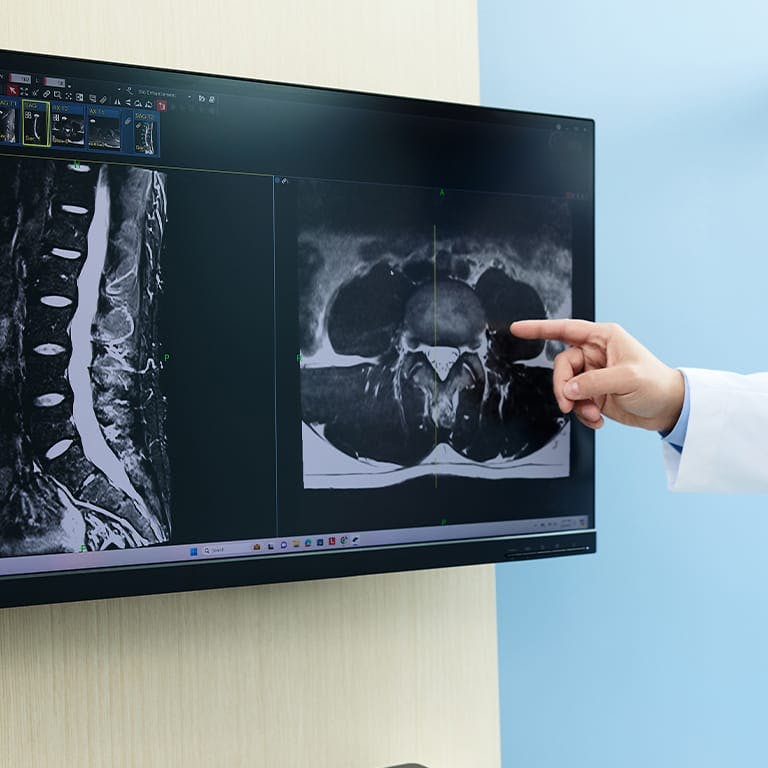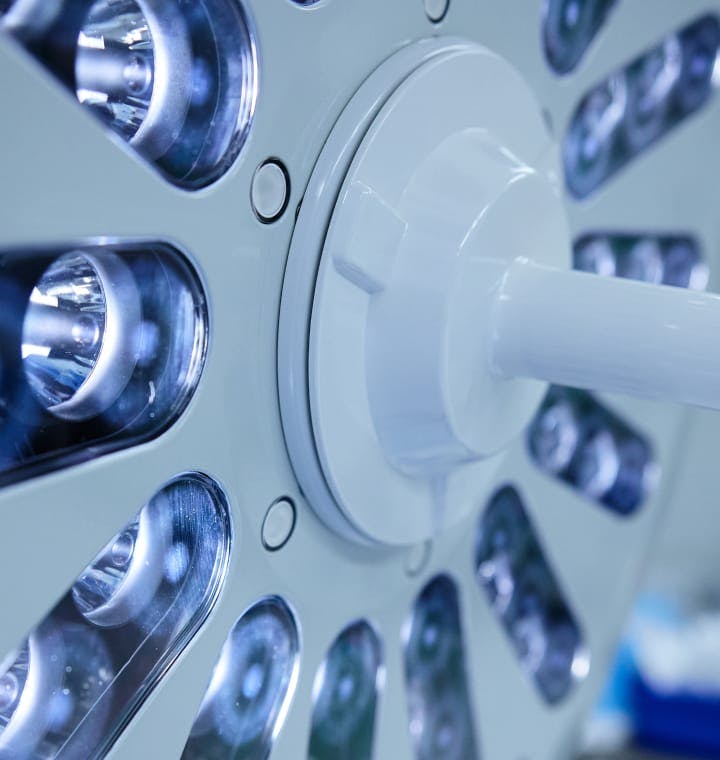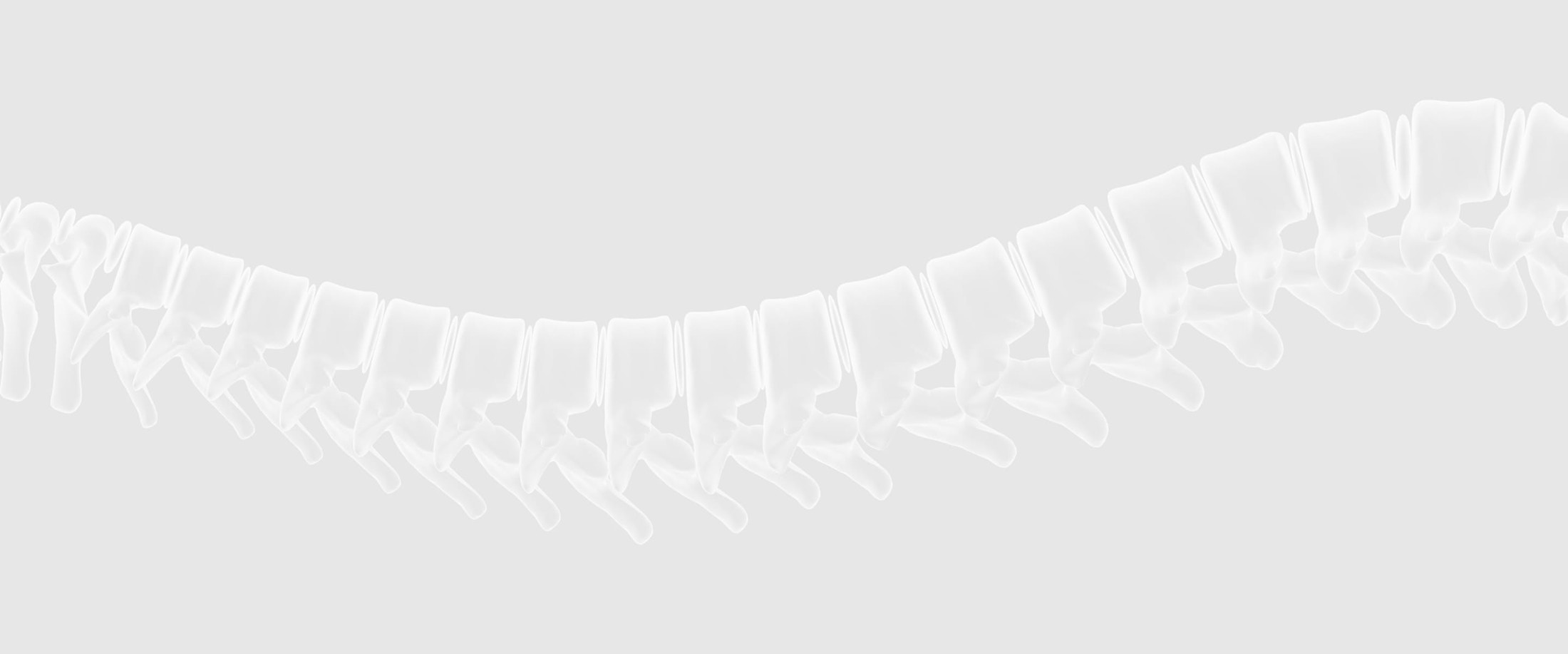The Procedures
Dr. Stieber performs several minimally invasive spinal procedures for our patients. The most common surgeries include:
Endoscopic Discectomy
This minimally invasive spine surgery is done to treat disc problems that are causing back and leg pain. Dr. Stieber accesses the spine through a keyhole incision and the entire procedure is performed using an endoscope, which is a tube with a tiny camera attached to the end.
This tool provides Dr. Stieber with excellent visualization of the disc and related structures, allowing him to select a portion of the disc to remove. To access the spine, he uses dilation tubes to gently separate the soft tissue, rather than cutting through muscle.
Microscopic Tubular Discectomy
This procedure is performed to decompress the nerve root and spinal cord, thus relieving painful symptoms. It is often done to treat compressed nerves due to:
- Disc degeneration
- Disc herniation
- Spinal stenosis
To begin, Dr. Stieber will make a tiny incision that is approximately the width of a dime. Surgical imaging will guide microsurgical instruments and sequential dilation will be performed with special tubes until the spine can be visualized with a robotic microscope. Dr. Stieber will then create a small window in the bone to access the pinched nerves. He will gently move those structures aside and remove the problematic portion of the offending disc.
Mini-Open Anterior lumbar interbody fusion
Also known as ALIF, anterior lumbar interbody fusion treats low back disorders such as degenerative disc disease and spondylolisthesis. Both conditions compress spinal nerves and can cause:
- Spinal instability
- Low back, buttock and leg pain
- Neurologic symptoms, such as tingling or weakness
The primary goal of ALIF is to decompress the nerve, stabilize the spine, and relieve symptoms so that the patient can return to their daily lives without discomfort. To begin, a very small surgical incision is created in the abdomen. From there, Dr. Stieber will pull soft tissues aside to expose the spine and disc. Using guidance from a real-time x-ray during surgery, he will insert a thin needle into the disc and remove all or part of the structure. He will then fill the empty disc space with a bone graft and interbody spacers.
Transforaminal interbody fusion
This procedure is a type of spinal fusion that is often done using advanced minimally invasive techniques. The goal is to restore disc height and permanently fuse damaged vertebrae together in the lower back. It’s commonly performed to treat spinal instability and pain caused by:
- Degenerative disc disease
- Spondylolisthesis
- Spinal stenosis
During surgery, Dr. Stieber accesses the spine through a small incision in the back followed by muscle dilation. From there, a small portion of the vertebral bone is removed to access the disc. The damaged portion of the disc is removed and the empty space is filled with bone graft. He will also implant screws and rods to offer added support, immediately stabilize the spine, and maintain proper alignment while fusion occurs.
Read More About Transforaminal Interbody Fusion
Lateral interbody fusion (XLIF)
XLIF (eXtreme Lateral Interbody Fusion) is a relatively new minimally invasive approach. It avoids cutting through or disrupting the muscles of the back and does not require the standard abdominal incision. It’s used to treat an array of disorders, including:
- Degenerative disc disease
- Degenerative scoliosis
- Spondylolisthesis
With this approach, the spine is accessed through a small incision in the patient’s side. Through that opening, Dr. Stieber will remove the damaged disc and replace it with an implant. He will then add bone graft material to promote fusion, along with rods, plates, and screws to provide additional support. Additional minimally invasive spinal procedures Dr. Stieber performs include:
- Percutaneous posterior instrumentation
- Deformity correction (scoliosis / kyphosis)
- Vertebroplasty and kyphoplasty







